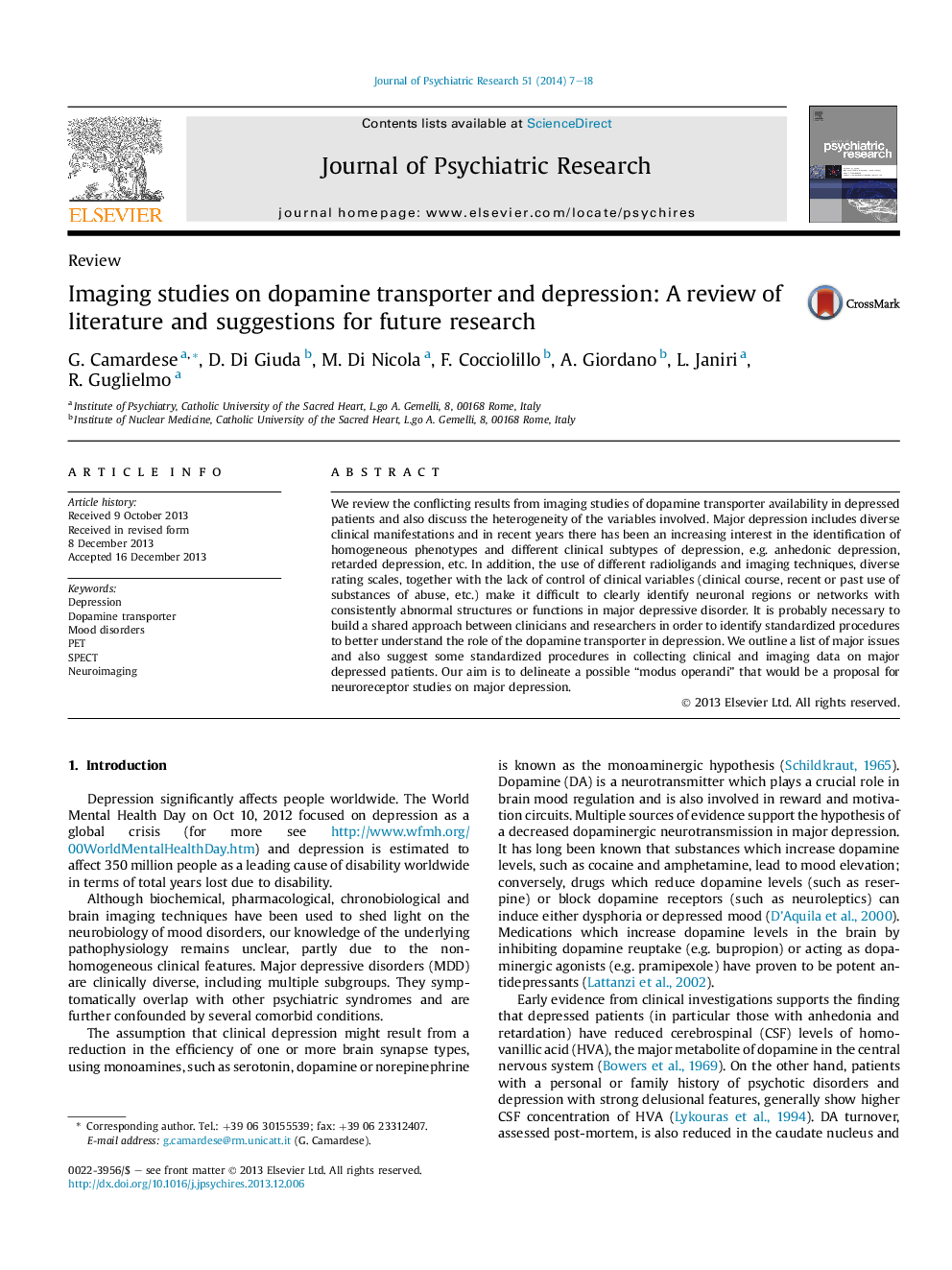| Article ID | Journal | Published Year | Pages | File Type |
|---|---|---|---|---|
| 6801138 | Journal of Psychiatric Research | 2014 | 12 Pages |
Abstract
We review the conflicting results from imaging studies of dopamine transporter availability in depressed patients and also discuss the heterogeneity of the variables involved. Major depression includes diverse clinical manifestations and in recent years there has been an increasing interest in the identification of homogeneous phenotypes and different clinical subtypes of depression, e.g. anhedonic depression, retarded depression, etc. In addition, the use of different radioligands and imaging techniques, diverse rating scales, together with the lack of control of clinical variables (clinical course, recent or past use of substances of abuse, etc.) make it difficult to clearly identify neuronal regions or networks with consistently abnormal structures or functions in major depressive disorder. It is probably necessary to build a shared approach between clinicians and researchers in order to identify standardized procedures to better understand the role of the dopamine transporter in depression. We outline a list of major issues and also suggest some standardized procedures in collecting clinical and imaging data on major depressed patients. Our aim is to delineate a possible “modus operandi” that would be a proposal for neuroreceptor studies on major depression.
Related Topics
Life Sciences
Neuroscience
Biological Psychiatry
Authors
G. Camardese, D. Di Giuda, M. Di Nicola, F. Cocciolillo, A. Giordano, L. Janiri, R. Guglielmo,
